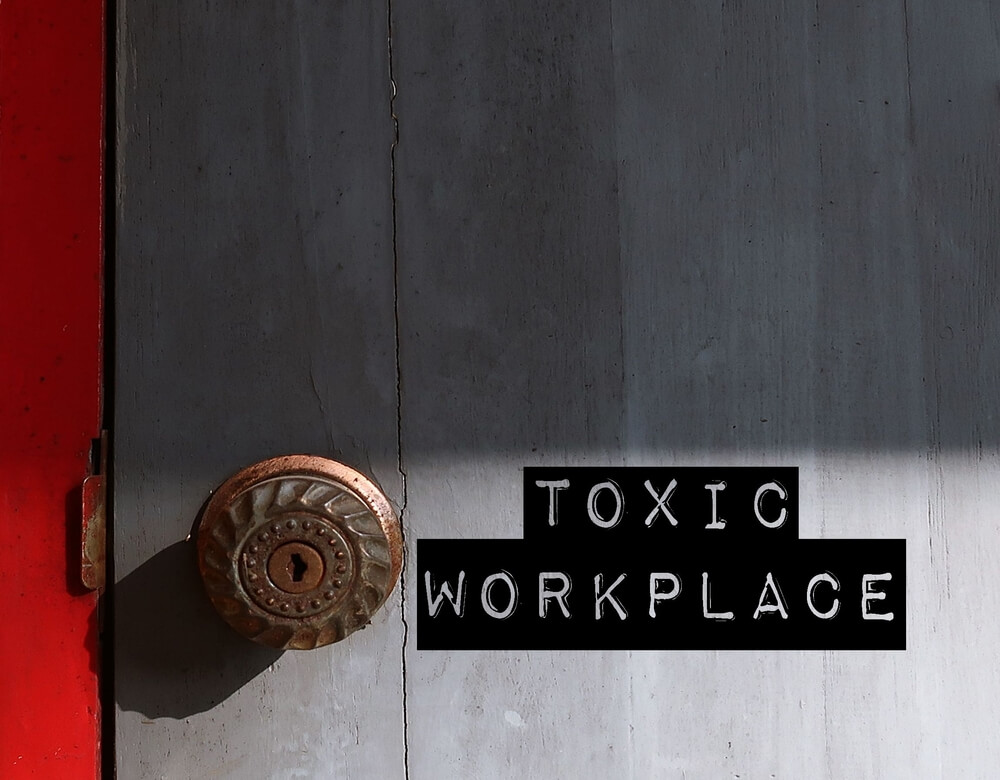The Truth About Toxic Workplaces: What to Do

As a business owner and a Career Coach, one of the processes of the business is sales. However, the goal should not be to sell to everyone you meet because they may not be a fit for your service.
One of the biggest pain points I run into is professionals in a toxic workplace and how to manage that in their career and how to move forward to continue developing their careers.
Naturally, the first instinct is to quit and leave. However, that isn’t always the case or the correct way to manage the situation. Let me explain why.
What Is a Toxic Work Environment?
A toxic work environment makes you feel psychologically unsafe. You feel like you could be punished, ridiculed, humiliated, or rejected at any unknown time for speaking up, share your opinion, or raising concerns and objections. A toxic workplace does not allow you to feel like you can show up as yourself at work. In this type of environment, negative behaviors persist. Those negative behaviors include manipulation, bullying, yelling, and harassment. These types of behaviors are so intrinsic to the organizational culture that a lack of productivity, a lack of trust, infighting, elevated levels of stress, and discrimination are the norms.
Over time, a toxic work environment can lead to anxiety and/or depression if not handled properly. If you work in a toxic environment, you may find yourself crying before or after work. It can also manifest in people-pleasing behaviors, where an employee is overdoing it only to be underappreciated, which will eventually lead to burn-out. Toxic work environments are typically systematic.


Over time, a toxic work environment can lead to anxiety and/or depression if not handled properly.
What Are Signs of a Toxic Environment?
Occasionally I will speak to a potential client, and they don’t even realize that they are in a toxic work environment because they are so accustomed to it. Here are some signs to clearly identify one:
- There Are No Boundaries Around Work: Toxic cultures oftentimes normalize and glorify a lack of healthy boundaries. You might see your manager pushing themselves to the point where they are exhausted and burnt-out – and then expect you to do the same. This could also mean responding to emails and messages at all hours, including nights and weekends. If you are a jobseeker, you should be wary of this when looking for a job. It’s a red flag if the expectation is to turn a project around quickly or respond to an email quickly.
- People Don’t Trust Each Other: In a toxic work environment, the lack of trust is obvious because it oftentimes results in micromanagement. Most employees don’t work well with micromanagement, and it can exacerbate other issues, such as imposter syndrome as well.
- There’s No Room for Errors: In most workplaces and cultures, it is important to learn from mistakes. However, in toxic environments that simply isn’t true. In this case, one can be raked over the coals. People also start doing whatever it takes to avoid being in the line of blame and to get ahead of their colleagues- like not sharing information or throwing a coworker under the bus. It can also be worse for minorities because it can feel like an indictment on status and roles at the company.
- Coworkers Treat Each Other with Contempt: When being treated with contempt, a manager can blatantly ignore your suggestions, and pick them up when someone else makes them, roll their eyes while you are speaking, and make personal attacks on your work.
- Unhealthy Interpersonal Relationships: The emotional health of a workplace can be felt just by observing the general ambience and body language of individuals. If they don’t engage in a healthy way, then it is likely that it is a toxic environment.
- Lack of Support for Employee Growth: Typically, employees in a toxic work environment must figure it all out on their own because there is no support or mentorship for their growth. This can be particularly difficult for entry-level employees who oftentimes will feel disillusioned and demotivated. This has become more common and worse virtually since that makes it easier to be disconnected from your manager and team.
- Gaslighting is Common: This is one of the most common signs I have seen and heard from clients who have dealt with a toxic work environment. When someone gaslights you, you question your thoughts, experiences, perceptions, and even your sanity. With gaslighting in the workplace, one may feel as though that the goalpost moves often because work is often questioned, and you walk away doubting your skills. Over time, it leads to you hating your work and/ or team. For minorities gaslighting is also worse because it can lead to experiences and reality being questioned and feeling demoralized due a constant lack of support.
- Physical Symptoms of Stress Manifest: Oftentimes, these symptoms begin to manifest themselves physically as well. Because an employee is in “fight or flight” mode for a prolonged period, it is possible to begin to feel stressed, anxious, depressed, and experience sleep and/ or digestive issues, fatigue, panic attacks, and aches and pains, such as headaches.
- Employees are Disengaged, and Turnover is High: After being in a toxic environment, you will start to shut down and disengage from work, your team, and the company. Even in virtual environments, cameras will be left off during meetings, and responses will be short and kept to a minimum.
What To Do If You Are in One?
This response can vary because sometimes it can be best to leave as soon as possible. In other instances, it can be best to consider therapy and begin to heal yourself first. I have also seen others try to address the point of the conflict. What works for one may not work for the other as this is not a one-size-fits-all solution.
In any case, have compassion with yourself first, and eventually, all the introspection, self-work, and confidence-boosting will lead to you planning your exit when you are ready. Once you do and you stand up for yourself, you will feel so proud and confident- and career development, growth, and success will follow.
Want new articles before they get published? Subscribe to our Awesome Newsletter.

CAREER ADVICE

GOV TALK
